Full Name Lydia Estes | Name Lydia Pinkham | |
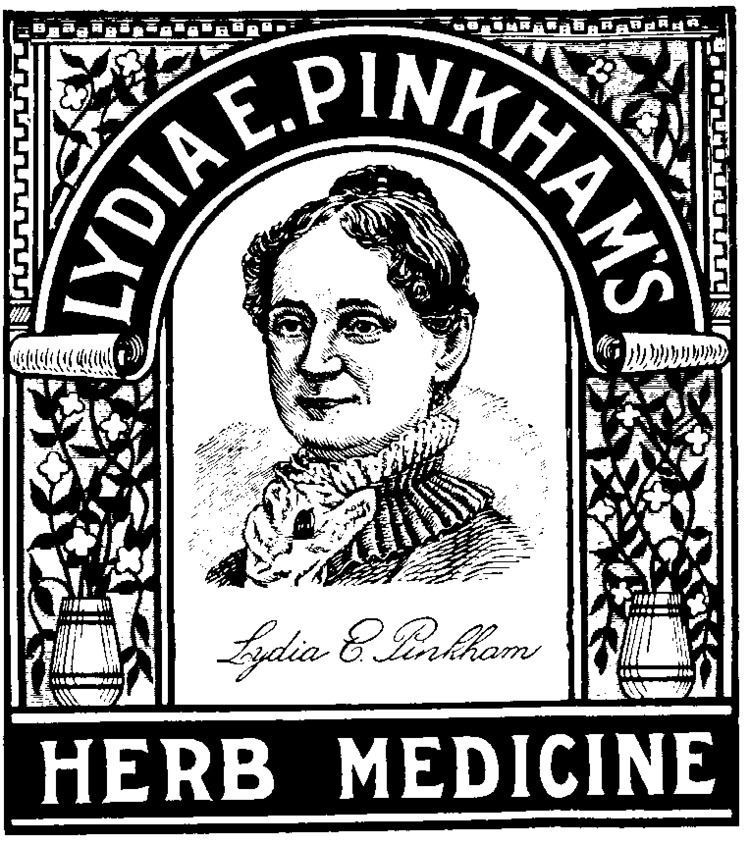 | ||
Died May 17, 1883, Lynn, Massachusetts, United States Books Treatise on the Diseases of Women | ||
The ballad of lydia pinkham trad arr by shananigans
Lydia Estes Pinkham (February 9, 1819 – May 17, 1883) was an iconic concocter and shrewd marketer of a commercially successful herbal-alcoholic "women's tonic" meant to relieve menstrual and menopausal pains. Although Pinkham's Vegetable Compound sold well to the general public, it was regarded by health experts as quackery.
Contents
- The ballad of lydia pinkham trad arr by shananigans
- Ttc vlog 14 lydia pinkham tablets organic foods
- Biography
- Lydia E Pinkhams Vegetable Compound
- The original product and its modern descendants
- Drinking songs
- References
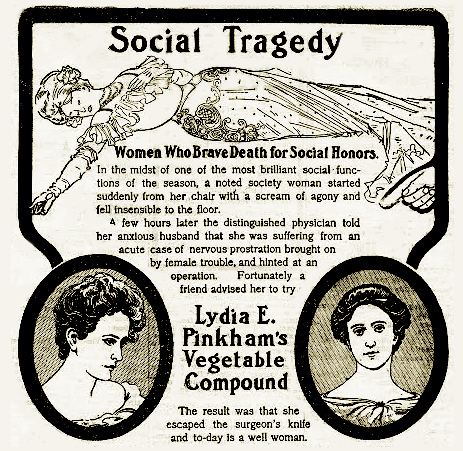
Ttc vlog 14 lydia pinkham tablets organic foods
Biography
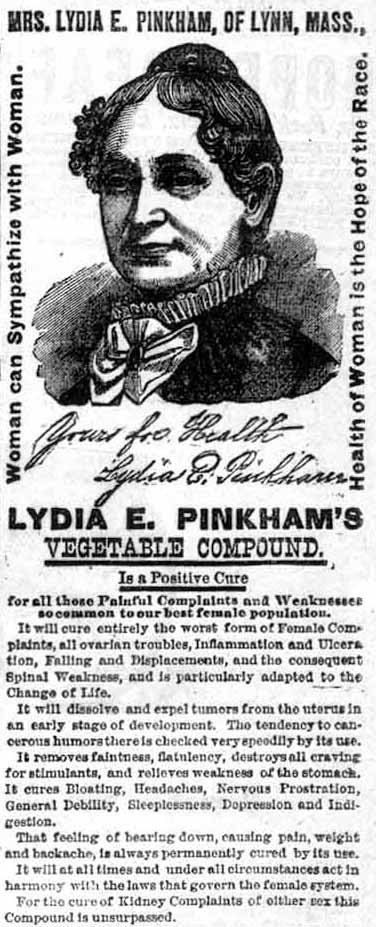
Lydia Pinkham was born in the manufacturing city of Lynn, Massachusetts, the tenth of the twelve children of William and Rebecca Estes. The Estes were an old Quaker family tracing their ancestry to one William Estes, a Quaker who migrated to America in 1676, and through him to the thirteenth-century Italian House of Este. William Estes was originally a shoemaker but by the time Lydia was born in 1819, he had become wealthy through dealing in real estate and had risen to the status of "gentleman farmer". Lydia was educated at Lynn Academy and worked as a schoolteacher before her marriage in September 1843.

The Esteses were a strongly abolitionist and anti-segregation family. The fugitive slave and abolitionist leader Frederick Douglass was a neighbor and a family friend. The Estes' household was a gathering place for local and visiting abolitionist leaders such as William Lloyd Garrison. The Esteses broke from the Quakers over the slavery issue in the 1830s. Lydia joined the Lynn Female Anti-slavery Society when she was sixteen. In the controversies which divided the abolitionist movement during the 1840s, Lydia would support the feminist and moral persuasion positions of Nathaniel P. Rogers. Her children would continue in the anti-slavery tradition.
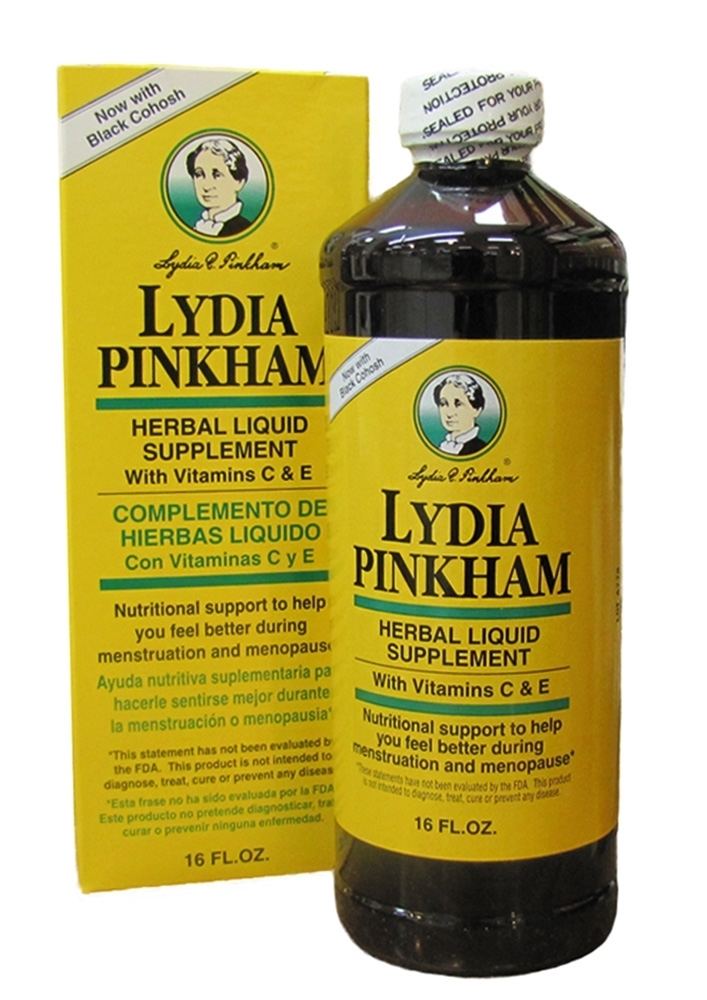
Isaac Pinkham was a 29-year-old shoe manufacturer when he married Lydia in 1843. He would try various businesses without much success. Lydia gave birth to their first child, Charles Hacker Pinkham, in 1844. She lost their second child to gastroenteritis, but gave birth to their second surviving child, Daniel Rogers Pinkham, in 1848. A third son, William Pinkham, was born in 1852, and a daughter, Aroline Chase Pinkham, in 1857. All the Pinkham children would eventually be involved in the Pinkham medicine business.

Like many women of her time, Pinkham brewed home remedies which she continually collected. Her remedy for "female complaints" became very popular among her neighbours to whom she gave it away. One story is that her husband was given the recipe as part payment for a debt. Whatever truth may be in this, the ingredients of her remedy were generally consistent with the herbal knowledge available to her through such sources as John King's American Dispensary, which she is known to have owned and used. In Lydia Pinkham's time and place the reputation of the medical profession was low. Medical fees were too expensive for most Americans to afford except in emergencies, in which case, the remedies were more likely to kill than cure. For example, a common "medicine", calomel, was in fact not a medicine, but instead a deadly mercurial toxin, and this fact was even at the time sufficiently well known among the skeptical to be the subject of a popular comic song. In these circumstances, there is no mystery why many preferred to trust unlicensed "root and herb" practitioners, and especially to trust women who were prepared to share their domestic remedies, such as Lydia Pinkham.
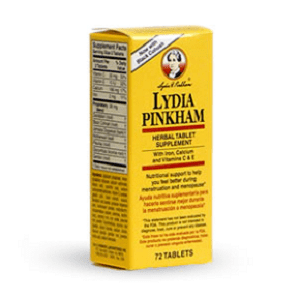
Isaac Pinkham was ruined financially and was permanently broken under the associated stress. The fortunes of the Pinkham family had long been patchy, but they now entered on hard times. Lydia sometimes accepted payment for her popular remedy for female complaints. It is reputed to have been her son Daniel who came up with the idea, in 1875, of making a family business of the remedy. Lydia initially made the remedy on her stove before its success enabled production to be transferred to a factory. She answered letters from customers and probably wrote most of the advertising copy. Mass marketed from 1876, on, Lydia E. Pinkham's Vegetable Compound became one of the best known patent medicines of the 19th century. Descendants of this product are still available today. Lydia's skill was in marketing her product directly to women, and her company continued her shrewd marketing tactics after her death. Her own face was on the label, and her company was particularly keen on the use of testimonials from grateful women.
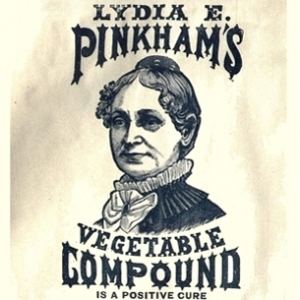
Advertising copy urged women to write to Mrs. Pinkham. They did, and they received answers. They continued to write and receive answers for decades after Pinkham's own death. These staff-written answers combined forthright talk about women's medical issues, advice, and, of course, recommendations for the company product. In 1905, the Ladies' Home Journal published a photograph of Lydia Pinkham's tombstone and exposed the ruse. The Pinkham company insisted that it had never meant to imply that the letters were being answered by Lydia Pinkham, but by her daughter-in-law, Jennie Pinkham.

Although Pinkham's motives were economic, many modern-day feminists admire her for distributing information on menstruation and the "facts of life", and they consider her to be a crusader for women's health issues in a day when women were poorly served by the medical establishment. The Lydia Pinkham House, located near her factory on Western Ave in Lynn, Massachusetts, was placed on the National Register of Historic Places September 25, 2012. In 1922, Lydia's daughter Aroline Pinkham Chase Gove founded the Lydia E. Pinkham Memorial Clinic in Salem, Massachusetts, to provide health services to young mothers and their children. The clinic has been controlled since 1990, by Stephen Nathan Doty, a fourth-generation descendant of Lydia, who also uses the memorial building as his personal residence. The clinic is in operation as of 2013. It is designated Site 9 of the Salem Women's Heritage Trail.
Lydia E. Pinkham's Vegetable Compound
The five herbs contained in Lydia Pinkham's original formula are:
The formula also contains drinking alcohol, which relieves muscular stress, reduces pain, and can affect mood.
Of the newer additions, motherwort is a nervine, emmenagogue, anti-spasmodic, hepatic, cardiac tonic, and hypotensive. Piscidia erythrina (Jamaican dogwood) is an eclectic remedy effective for painful spasms, pelvic pain, dysmenorrhea, and ovarian pain. Licorice is anti-inflammatory, anti-hepatotoxic, anti-spasmodic, and a mild laxative. Gentian is a sialagogue, hepatic, cholagogue, anthelmintic, and emmenagogue. Dandelion is a potassium-sparing diuretic, hepatic, cholagogue, anti-rheumatic, laxative, tonic, and a bitter.
It is often suggested by the alternative medicine community that black cohosh (and a purified version, Remifemin) really do provide relief from symptoms of menopause. A report by the Natural Standard, which performs evidence-based reviews of alternative therapeutics, says:
Black cohosh is a popular alternative to prescription hormonal therapy for treatment of menopausal symptoms such as hot flashes, mood problems, perspiration, heart palpitations, and vaginal dryness. Initial human research suggests that black cohosh may improve some of these symptoms for up to six months. However, most studies are not well designed and results are not conclusive.
The report gives the evidence a "B" rating, "good scientific evidence for this use".
The National Institutes of Health performed a "...12-month randomized, double-blind, placebo-controlled trial, compared several herbal regimens and menopausal hormone therapy (estrogen with or without progesterone) to placebo in women ages 45 to 55... Newton and colleagues found no significant difference between the number of daily hot flashes and/or night sweats in any of the herbal supplement groups when compared to the placebo group."
The popularity of Mrs. Pinkham's compound long after her death is testament to its acceptance by women who sought relief from menstrual and menopausal symptoms. The company continued under family control until the 1930s. Although Lydia Pinkham's company continued increasing profit margins fifty years after her death, eventually the advent of the Food and Drug Administration (FDA) caused changes in the formula. The compound is now produced by a pharmaceutical company.
The original product and its modern descendants
The original formula for Lydia Pinkham's Vegetable Compound was:
As of 2004, Numark Laboratories of Edison, New Jersey, markets a similar product named "Lydia Pinkham Herbal Compound". The product is carried by the Walgreens, CVS and Rite Aid drugstore chains. Ingredients listed in this product are:
Time of Your Life Nutraceuticals of St. Petersburg, Florida, produces a product named Lydia's Secret for Lydiapinkham.org. Said to be "based on" the original formula, it has these listed ingredients
Drinking songs
Pinkham and her "medicinal compound" are memorialized in the folk song "The Ballad of Lydia Pinkham", also known as "Lily the Pink" (Roud number 8368). As folk songs, these have no definitive versions, but one version was certainly in existence by the time of World War I. Drinking songs that consist of numerous verses describing the humorous and ribald invigorating effects of some food or medicine form almost a small genre in themselves. The fact that Pinkham's medicine was marketed for "female complaints" made it especially vulnerable to ribald fantasies about what it might cure.
A sanitized version of "Lily the Pink" was a number one hit for the Scaffold in the United Kingdom in 1968/69. The Irish Rovers also released the Scaffold version of the song, in 1969, on the album Tales to Warm Your Mind, and as a single reaching the Top 30 on the US Billboard charts. The song was further successfully adapted into French in 1969 by Richard Anthony, describing humorously the devastating effects of a so-called "panacée" (universal medicine).
One reason that a humble women's tonic could become the subject of such and sundry ribald drinking ballads and an increasing success in the twenties and early thirties was its availability, as a 40-proof patent eye-opener, during Prohibition.
